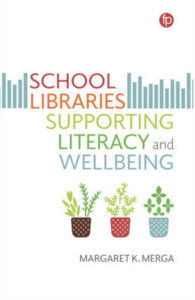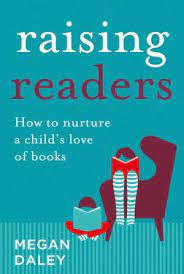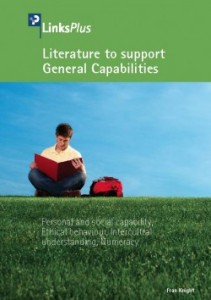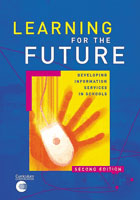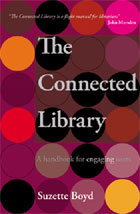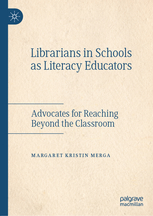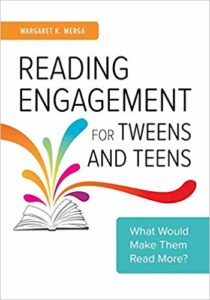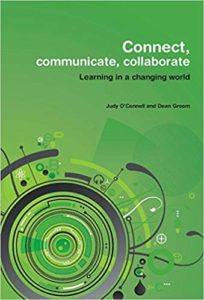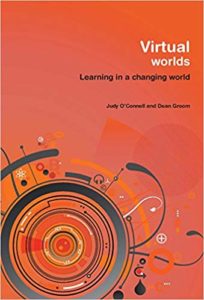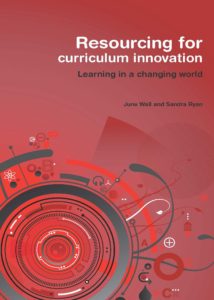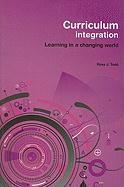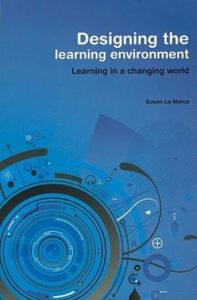SLAV
WASLA Members receive any SLAV professional learning opportunities at membership rates. If you are interested in any of the courses offered please email our Executive Officer for the applicable discount code.
Smartcopying
SCIS
Professional Learning opportunities
ALIA
TAFE WA
Certificate III in Library and Information Services – North Metropolitan TAFE
Diploma of Library and Information Services – North Metropolitan TAFE
Charles Sturt University
Master of Education (Knowledge Networks and Digital Innovation)
Curtin University of Technology
Department of Information Studies courses – Online Handbook
Useful Books
School Libraries Supporting Literacy and Wellbeing by Dr Margaret Merga
This book seeks to promote greater understanding of the links between reading, literacy and wellbeing that could help students cope with these challenges, and the role of the school library in leading this approach. It explores the current role of school library professionals and highlights how literacy and wellbeing education and support sit within this, paying specific attention to how school library professionals build reading engagement and promote student wellbeing through various approaches, such as fostering health literacy and creating nurturing environments.
Click on the title above for a link to the website to purchase a copy of the book.
Raising Readers by Megan Daley
Raising Readers is a must-have resource for parents and educators to help the children in their lives fall in love with books. It also contains practical tips, such as suggested reading lists and instructions on how to run book-themed activities.
Copyright & Online Technologies
Literature to support General Capabilities by Fran Knight and Pat Pledger
Pledger Consulting, 2013, pbk. ISBN 9781876678395. Price $38.50 (incl.
GST)
Annotated lists for the General Capabilities with an emphasis on
Personal and Social Capability, Ethical Behaviour and Intercultural
Understanding.
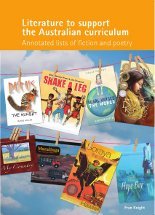
Pledger Consulting, 2011. ISBN: 978 1 876678258.
Highly recommended.
This brilliant resource is a must for every school library. As stated in the title, it contains clearly set out lists of titles under the themes of Asia, Sustainability, Indigenous literature and Poetry as well as providing suggestions for class texts and titles to read aloud. With a focus on the various age groups, Knight sorts titles to fit entry level to Year 3, Years 4 to 7 and Years 7 to 10. A precis for each title is provided to enable one to get a feel for the book without having to search the shelves and databases. Particularly for teacher librarians who are regularly bombarded with requests for titles which may fit a theme or subject area, this will make life considerably easier. Alongside Pat Pledger and Fran Knight’s other titles, Flash Fiction, Historical Fiction and Values Fiction, this title would be a support for any teacher or teacher librarian wishing to truly immerse students in quality literature. Their previous publications are still relevant and easy to add new titles to as they are released.
Having read many of Fran’s reviews, it is obvious that she is a prodigious reader and I value her opinions on the many titles included in this publication. I now eagerly await a similar title to suggest texts for each subject within the National Curriculum, particularly for use alongside the specific history topics. Whilst I appreciate the networking of colleagues on such lists as OZTL, as we collaborate to find titles to suit a theme, it will be an asset to have good solid lists in place as a first resort. A highly recommended title!
Jo Schenkel
Learning for the Future
Developing Information Services in Australian schools, Second Edition
ISBN: 1-863-66710-5
- Provides strategies for effectively implementing information and communication technologies (ICTs) in the school’s learning environment.
- Discusses the increasingly significant role of information and communication technologies (ICTs) in the school’s learning environment.
- Positions the role of information service centres/libraries in the context of the school as structured around the five domains: learners and learning; teachers and teaching; resourcing the curriculum; facilitating access to information; developing the physical environment.
The Connected Library:
A handbook for engaging users
by Suzette Boyd
ISBN: 0-646-46138-9
In recent times librarians in schools have come to be considered technology experts, curriculum leaders, literature gurus, web masters and providers of on-line information and professional development. They are also expected to be human dynamos, with energy to burn, to have a huge capacity to absorb new information, to have the imagination to deliver exciting new programs, whilst at the same time having the ability to maintain an efficient and relevant library service. Suzette Boyd believes this is probably still not enough and that the level of engagement with users is the real measure of success!
In The Connected Library Suzette Boyd points the way to:
- Building connections and trust with students,
- Communicating with and enlisting the support of all users,
- Being positive, upbeat and enthusiastic,
- Marketing and promoting the library through an extraordinary array of ideas and activities,
- Influencing the Principal,
- Becoming the cultural and educational hub of the school.
Librarians in Schools as Literacy Educators:
Advocates for reaching beyond the classroom
by Margaret Merga
ISBN: 978-3-030-21025-0
This book explores the role that librarians play within schools as literacy leaders. While librarians working in schools are generally perceived as peripheral to the educational experience, they can in fact provide significant support in encouraging children’s literacy and literature learning. As the need for strong functional literacy becomes ever more important, librarians who support literacy are often invaluable in achieving various academic, vocational and social goals. However, this contribution often seems to be overlooked, with funding cuts disproportionately affecting librarians. Building on recent research from Australia, the USA and the UK, the author examines the role that librarians may play as literacy educators in schools in order to make visible their contributions to the school community. In doing so, this book urges for greater recognition and support to school libraries and their staff as valuable members of the school community(Review sourced from https://www.palgrave.com/gp/book/9783030210243)
Reading Engagement for Tweens and Teens:
What would make them read more?
by Margaret Merga
ISBN: 9781440867989
Reading Engagement for Tweens and Teens: What would make them read more? identifies evidence-backed and easy-to-implement strategies for encouraging young people to read, and helps you to position your library as an indispensable resource for supporting reading. Additionally the book: Considers strategies for countering the biggest barriers to reading as identified by young people
- Explains how to most effectively implement common strategies to support reading engagement at your school, such as implementing sustained silent reading, having conversations about books, and reading aloud to older children
- Offers strategies for promoting awareness of the ongoing value of reading and for teaching parents and teachers to encourage reading beyond the point of independent reading skill acquisition
- Moves away from generalizations that reinforce gender stereotypes and stereotypes about tweens and teens related to their technology use and skills
- Highlights the importance of access to books and provides evidence for the role of libraries as reading-supportive spaces
- (Review sourced from https://www.amazon.com.au/Reading-Engagement-Tweens-Teens-Would/dp/1440867984)
Learning in a Changing World Series:
A joint publication of ASLA, ALIA and ACER
Published by ACER Press
The Learning in a Changing World series by ACER Press addresses how the process of learning is evolving, including the array of resources available in the digital age, the changing curriculum, and the different teaching strategies needed in order to use new media and technologies. The series presents core areas for teachers, librarians, and school leaders to consider for 21st century learning which are: the digital world, virtual worlds, curriculum integration, resourcing, and the physical environment. All are essential elements to enable and empower students to be lifelong learners and active participants in society.
Connect, communicate, collaborate:
Learning in a changing world
by Judy O’Connell and Dean Groom
ISBN: 9780864318930
Our students are involved in an ‘architecture of participation’ – creating, adapting and sharing content. While for them this learning is a comfortable multimodal conversation, for us this change is revolutionary. As we begin to understand the importance of these seismic shifts, we come to the realisation that we are being challenged to un-learn and re-learn in order to grant students access to 21st century learning. Schools and school libraries have many challenges ahead to renew pedagogy and technology work practices. We hope that Connect, communicate, collaborate will provide the knowledge, inspiration and motivation to get you started.
(Review sourced from https://www.amazon.com.au/Connect-Communicate-Collaborate-Judy-OConnell/dp/0864318936)
Virtual Worlds:
Learning in a changing world
by Judy O’Connell and Dean Groom
ISBN: 978-0864318848
Each year, there are more and more avatars in rich virtual environments. These immersive worlds – where the world within the screen becomes both the object and the site of interaction – are on the increase, matching the promise of technology with the creative minds of students. Educators, keen to incorporate the evolving literacy and information needs of 21st century learners, will want to understand the opportunities provided by multi-user virtual environments (MUVEs), massively multiplayer online role-playing games (MMORPGs), and 3D immersive worlds, so as to be able to create more interactive library, educational, and cultural projects. The challenge is to accept that these interactive environments are here to stay and that schools can, and should, embrace learning in virtual worlds.
(Review sourced from https://www.amazon.com/Virtual-Worlds-Learning-Changing-World/dp/0864318847)
Resourcing for Curriculum Integration:
Learning in a changing world
by June Wall and Sandra Ryan
ISBN: 9780864319173
In a continually changing learning environment, innovation is crucial for educators so they can adapt and develop expert teaching and learning activities.
Resourcing for student learning since the start of the digital age has become more complex and more challenging for school libraries. This book provides both an approach to developing school library collections and a balanced view of the types of resources required for student learning. No longer is the book the sole information resource; books and digital collections must now share equal space for learning as that is the growing nature of our students’ learning needs.
A part of the Learning in a Changing World Series, Resourcing for Curriculum Innovation outlines the types of information resources needed for curriculum change and innovation as well as the resources required for students to be able to process the information.
(Review sourced from https://shop.acer.edu.au/resourcing-for-curriculum-innovation)
Curriculum Integration:
Learning in a changing world
by Ross J Todd
ISBN: 9780864319098
Curriculum Integration outlines and presents a curriculum integration matrix for 21st century learning in complex and diverse information environments. The curriculum integration matrix is based on the constructivist instructional framework of Guided Inquiry and underpinned by the Information Search Process, both developed by Carol Kuhlthau, Professor Emerita, Rutgers University. It outlines how Guided Inquiry as an instructional framework in 21st century schools can be developed and implemented to enable students to learn meaningfully from diverse and complex information sources.
(Review sourced from https://www.bookdepository.com/Curriculum-Integration-Ross-J-Todd/9780864319098)
Designing the learning environment:
Learning in a changing world
by Susan La Marca
ISBN: 9780864318763
Designing the Learning Environment discusses how effective learning spaces are developed, with an emphasis on understanding the needs of the major stakeholders of these spaces which are the students. Designing learning spaces and, in particular, designing school libraries as learning spaces, is presented as an approach to understanding learning needs. Specifically, planning must be learning-driven, human-centered, and flexible. Designing the Learning Environment looks at research and learning theories and uses these as the foundation for planning. Various aspects of school library design are considered and discussed: types of spaces (from large group to individual, workroom spaces, reading spaces), ICT requirements, the impact of factors such as lighting and acoustics, and the aesthetics of the finished design.
(Review sourced from https://www.booktopia.com.au/designing-the-learning-environment-susan-la-marca/book/9780864318763.html)
Evidence Guides
Evidence guides for Teacher Librarians – Australian School Library Association
Guidelines
IFLA School Library Guidelines – http://- https://www.ifla.org/publications/node/9512
Surveys
Softlink survey – https://www.softlinkint.com/blog/australia-new-zealand-and-asia-pacific-school-library-survey/


